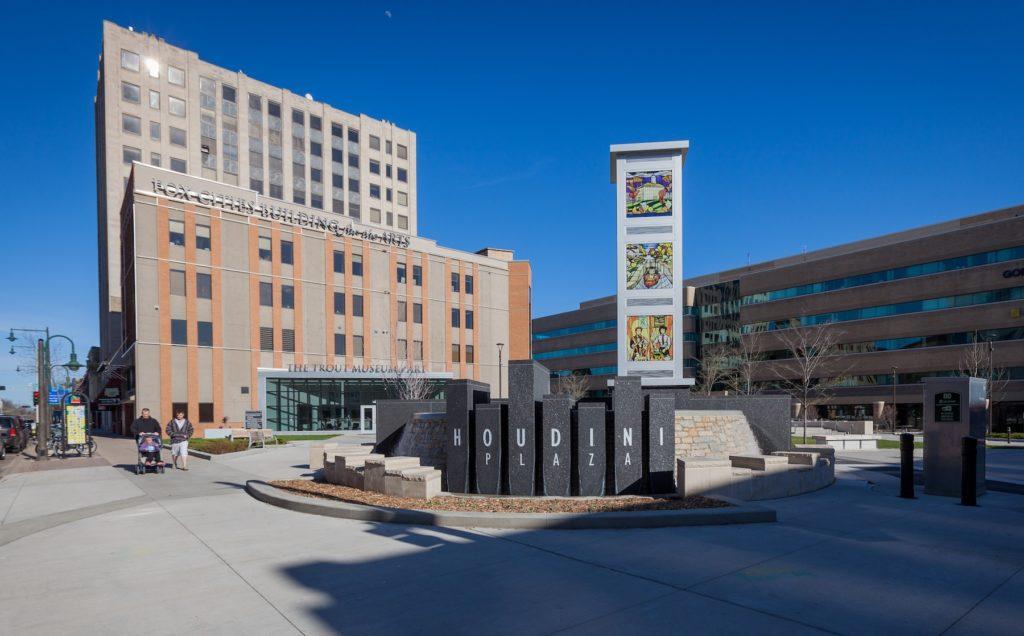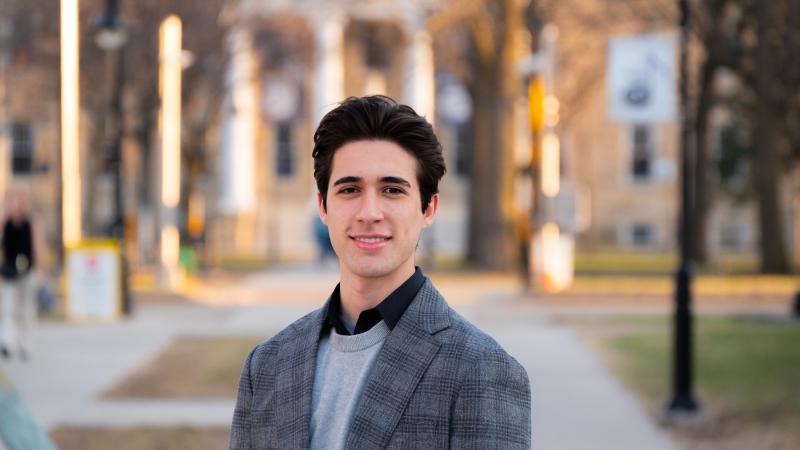Like any city, Appleton has its own claims to fame, whether it’s an actor from here who made it big or an innovation in technology that has its roots here in this community.
For incoming Lawrence students trying to get the lay of the land when it comes to a new home, here are six curious tidbits about Appleton history that may surprise you.
1. Appleton was the childhood home of Harry Houdini
This amazes a lot of people, but there’s no trick to it. Houdini, or Erik Weisz, was born in Budapest in 1874. His family settled in Appleton in 1878, where they lived for four years until his father lost his job and they moved to Milwaukee. Despite the move, Houdini considered Appleton to be his boyhood home. Houdini Plaza, the community space in the center of downtown, is named for the famed escape artist. The History Museum at the Castle, just down the street, has an extensive Houdini exhibit. There’s a Houdini Elementary School in town. You can eat at the Houdini’s Escape Gastropub, and each fall you can run in the Houdini 10K race. So, yea, Houdini is here.
2. Willem Dafoe got his start in Appleton
You might recognize Willem Dafoe from Platoon (1986), Spider-Man (2002) and The Florida Project (2017). Did you know the four-time Academy Award nominee was born in Appleton in 1955? He was William then. Early in his teenage years, he began acting in Appleton’s Attic Theatre. He was Billy then. When he was kicked out of Appleton East High School (that’s another story) he fulfilled his graduation requirements by taking a class at Lawrence.
3. Appleton is the home of the oldest coeducational college in Wisconsin
Here’s some history that involves Lawrence. Did you know Appleton has been making strides in gender equality since the time of its founding? Lawrence University was chartered in 1847 and has admitted women since the first day of classes on Nov. 12, 1849, making it the oldest coed college in Wisconsin.
4. Sen. Joe McCarthy grew up in the Appleton area
Here’s a refresher from history class: Sen. Joseph McCarthy achieved notoriety in the 1950s when he accused members of the U.S. government (and others) of communist activity, contributing to the collective panic that marked the Cold War era. Before that, the senator was Joe from Appleton. Well, Grand Chute, actually. He was at one time the manager at an Appleton grocery store. He later earned his law degree at Marquette University, was elected to a circuit court judgeship and eventually was elected to the Senate, all before becoming one of the most reviled politicians in U.S. history. He is buried in St. Mary’s Cemetery in Appleton.
5. Appleton had the first hydroelectric power station
In 1882, Appleton paper manufacturer H.F. Rogers needed a source to power his paper plant. Inspired by Thomas Edison’s designs for a steam power station in New York, Rogers commissioned the first hydroelectric power station to be built. It came to fruition along the Fox River, generating enough power to run his plant, his home, and a nearby building. The Hearthstone House Museum in Appleton is now open to the public, marking that historic contribution to the modern power grid.
6. Appleton gave us author Edna Ferber
The Pulitzer Prize winner was born in Kalamazoo, Michigan in 1885, moving with her family to Appleton when she was 12. She started her writing career here in Appleton, working as a reporter for the Appleton Daily Crescent at age 17. She nurtured her love of writing and reporting, leading her to eventually write iconic novels such as So Big (1924) and Showboat (1926). She’s often mentioned among the greatest novelists of her generation.



